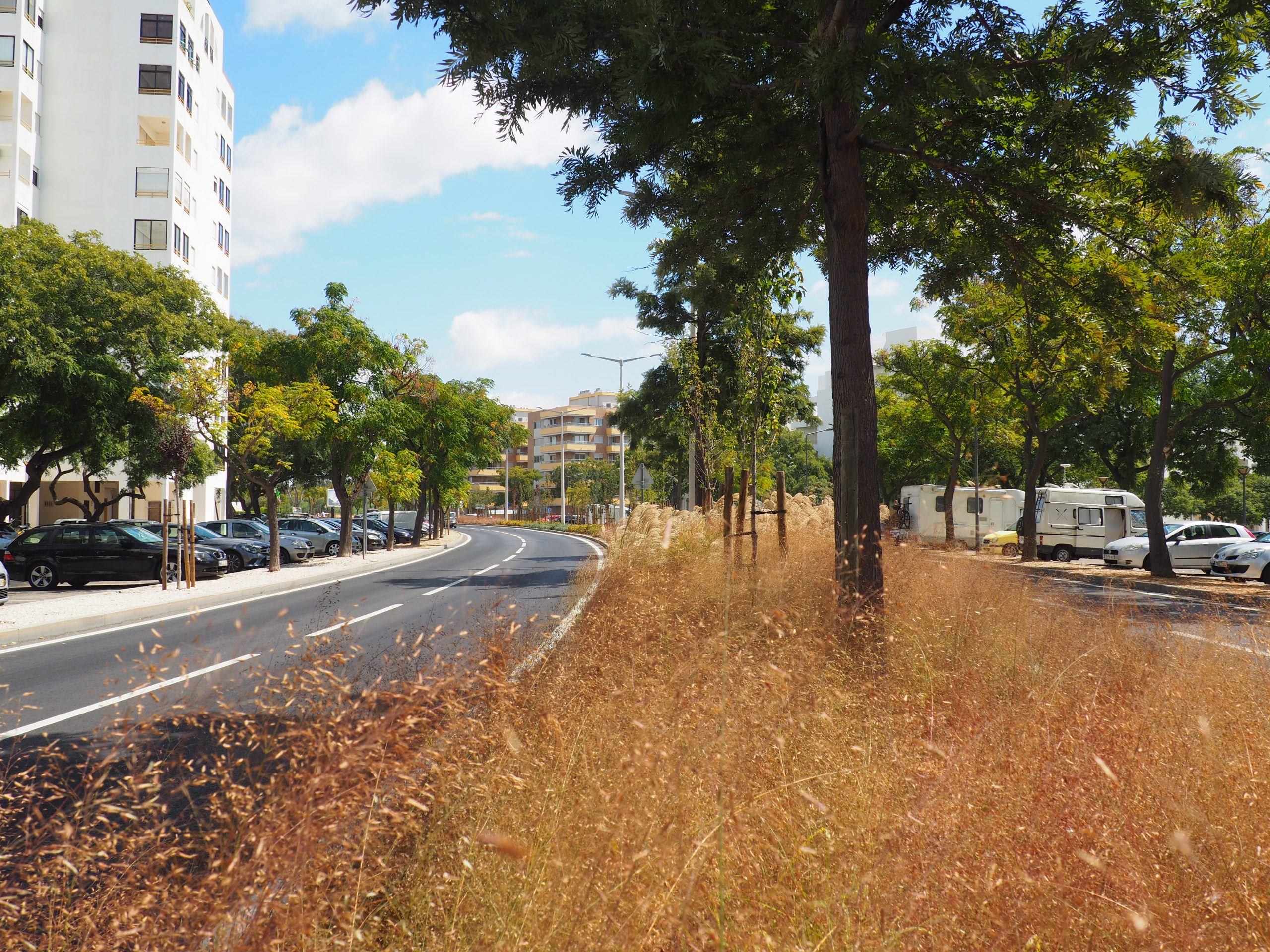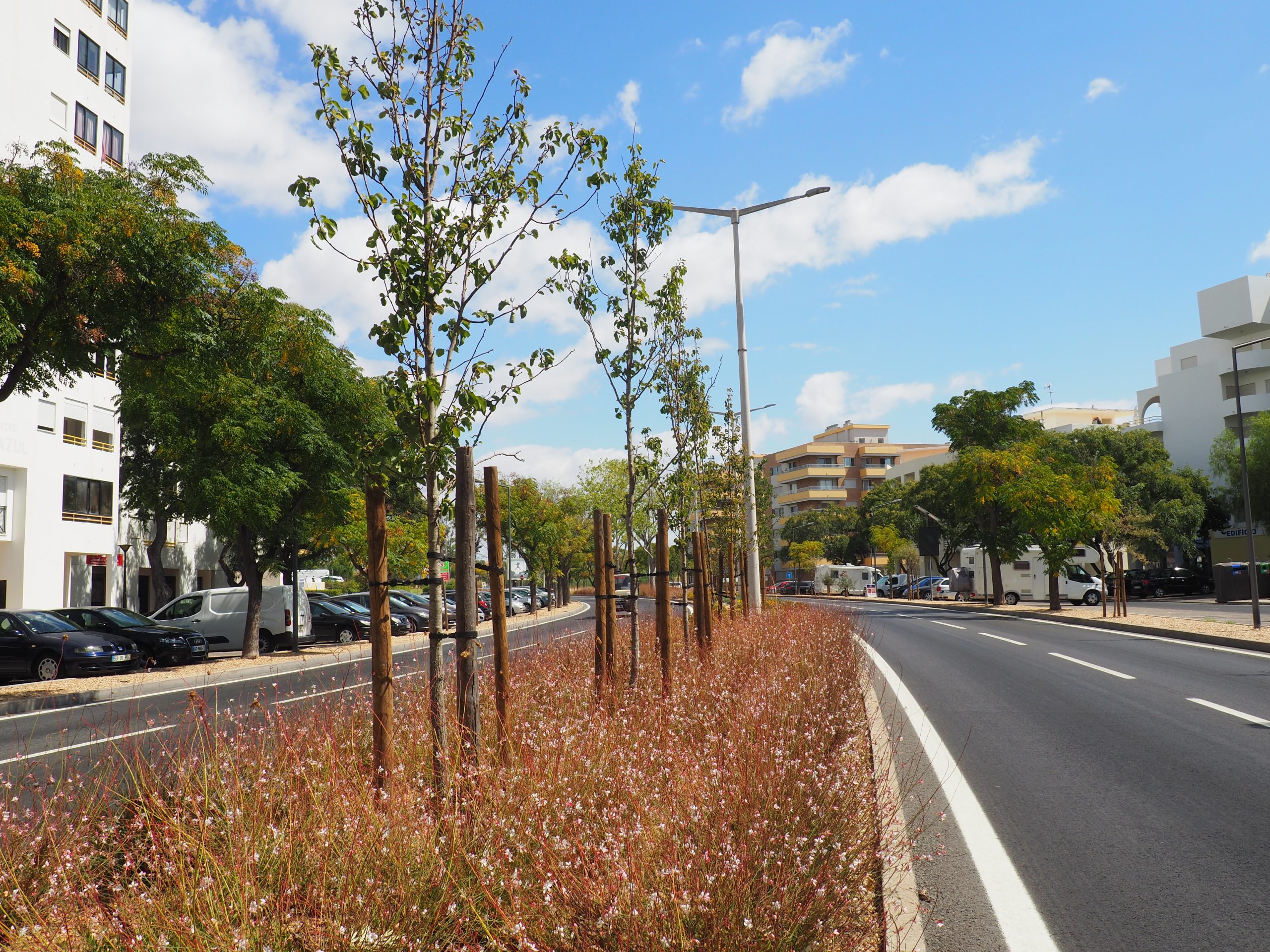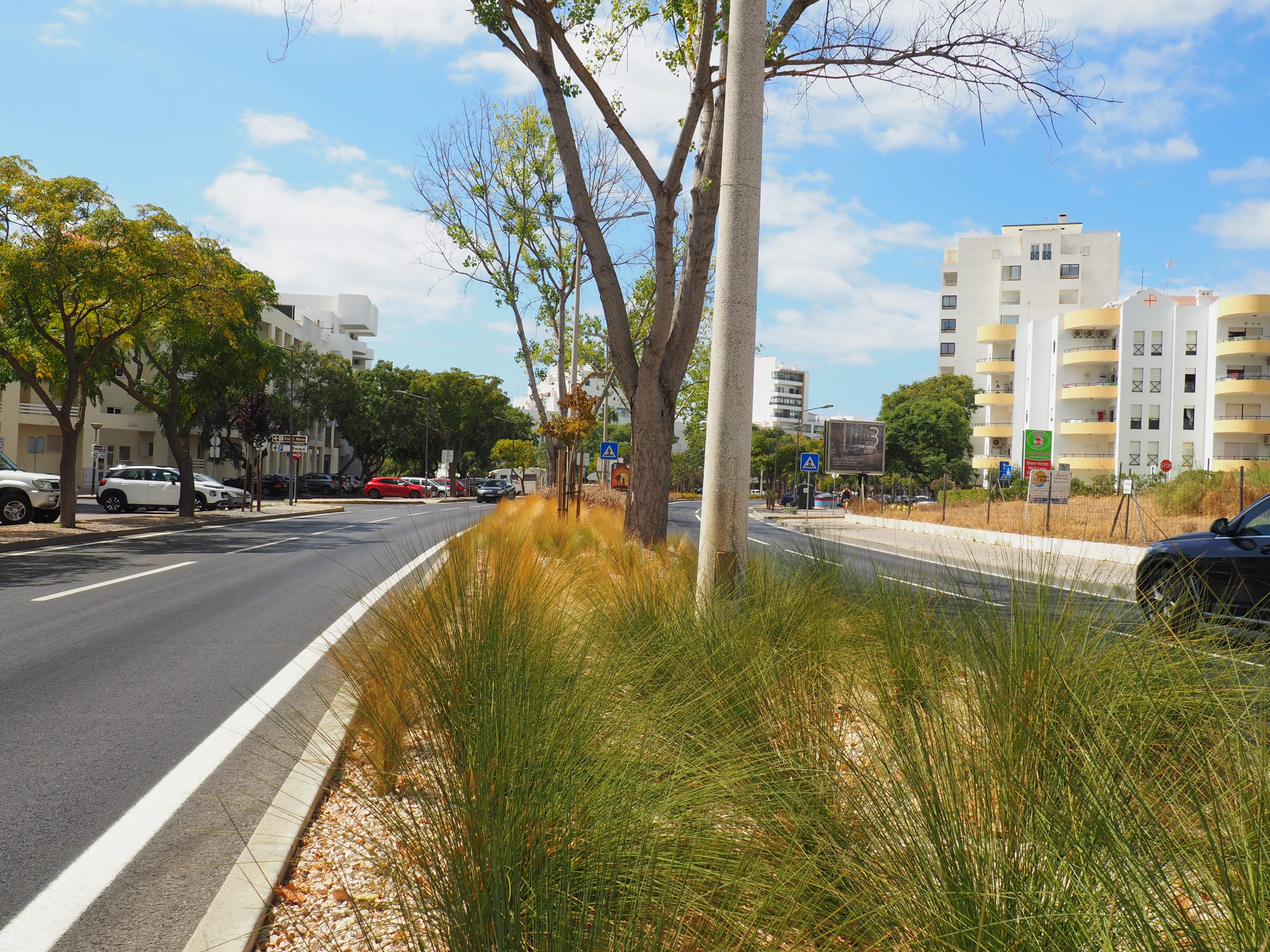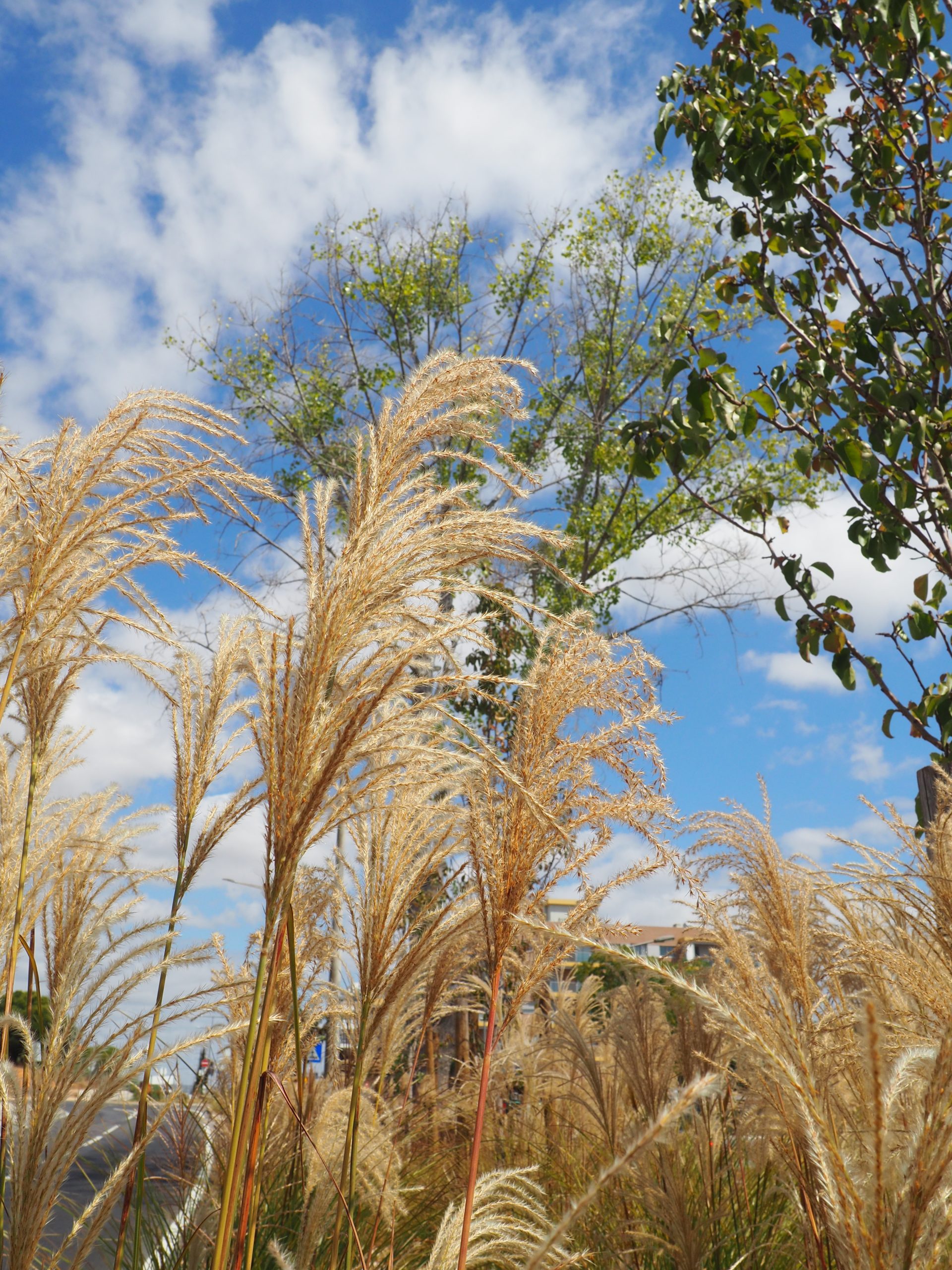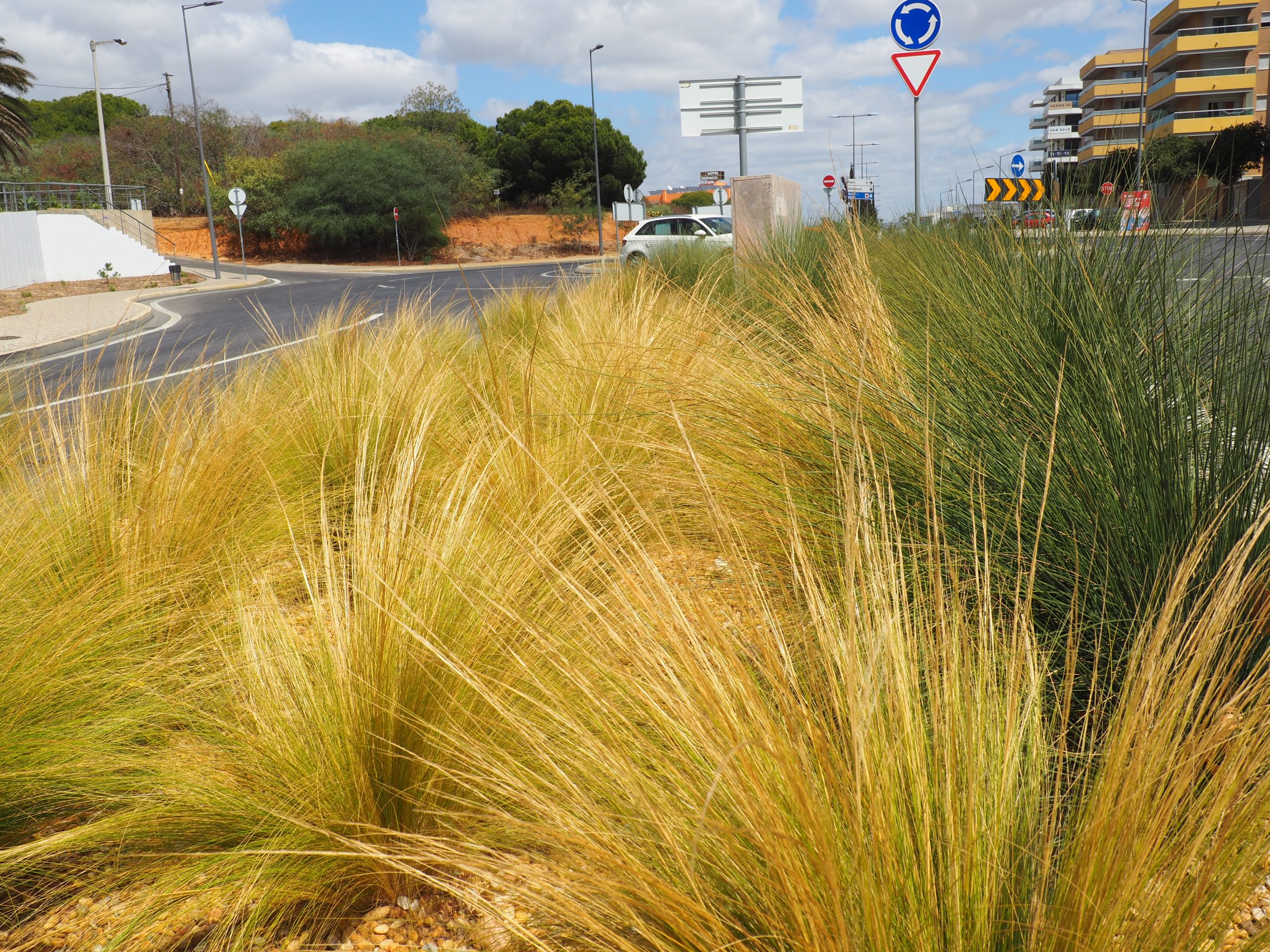- Intervention on a busy road, particularly during the summer period. This conditions the vegetation to be proposed;
- The existing tree vegetation needs to be systematically assessed;
- Use of undergrowth as a deterrent to pedestrians crossing outside the existing crosswalks;
- The need to rationalize water consumption in green spaces;
- The need to design a set of low-maintenance green spaces that ensure scenic and colorful enhancement.
The stretch of Avenida Francisco Sá Carneiro proposed for landscaping was the result of a public work of great significance for the town of Quarteira, which indelibly marked its urban development. Following this work, and as a way of reinforcing its importance, the green spaces associated with this road were designed to create a modern and unique image in the regional context. The exclusive use of ornamental lawns (with little or no capacity for use) is a clear sign of a model that today can be said to be outdated.
Once the areas to be densified with new tree planting had been identified, two types of species to be used were established: a central separator, in which priority was given to large trees that would not interfere with car traffic, and trees with a markedly ornamental nature in the separators on the sides of the carriageways.
As for the sub-arboreal extract (ornamental shrubs and herbaceous plants), its use was limited to the central divider and its primary purpose was to create a physical barrier to the pedestrian crossing of Avenida Sá Carneiro. Priority was given to ornamental grasses, a group of low-maintenance plants that consume little water and are highly resistant to pests and diseases.
As already mentioned, all the separators that have been targeted are currently covered in grass. Although the irrigation system installed minimizes water consumption (underground drip irrigation), it is still a waste of a finite resource that needs to be corrected. This is why this proposal opted to use a set of five different inert materials to cover the soil. These aggregates, as well as guaranteeing a significant diversity of colors, also help to conserve moisture in the soil, substantially reducing losses due to direct evaporation of water and allowing for a reduction in the watering times needed for the plants to survive.
The above-mentioned inert materials are placed on an anti-weed screen of a type that ensures a drastic reduction in unwanted weeds in planted areas without compromising their permeability. To prevent the aggregates from mixing with each other, it is proposed that they be divided using a 3mm corten steel profile.


